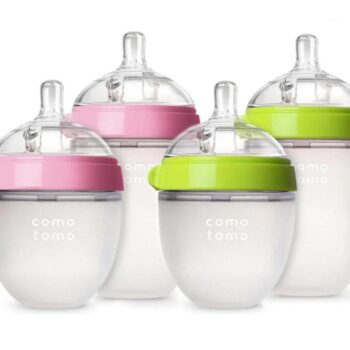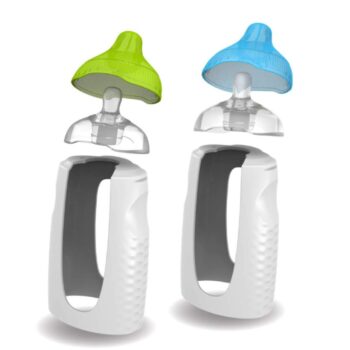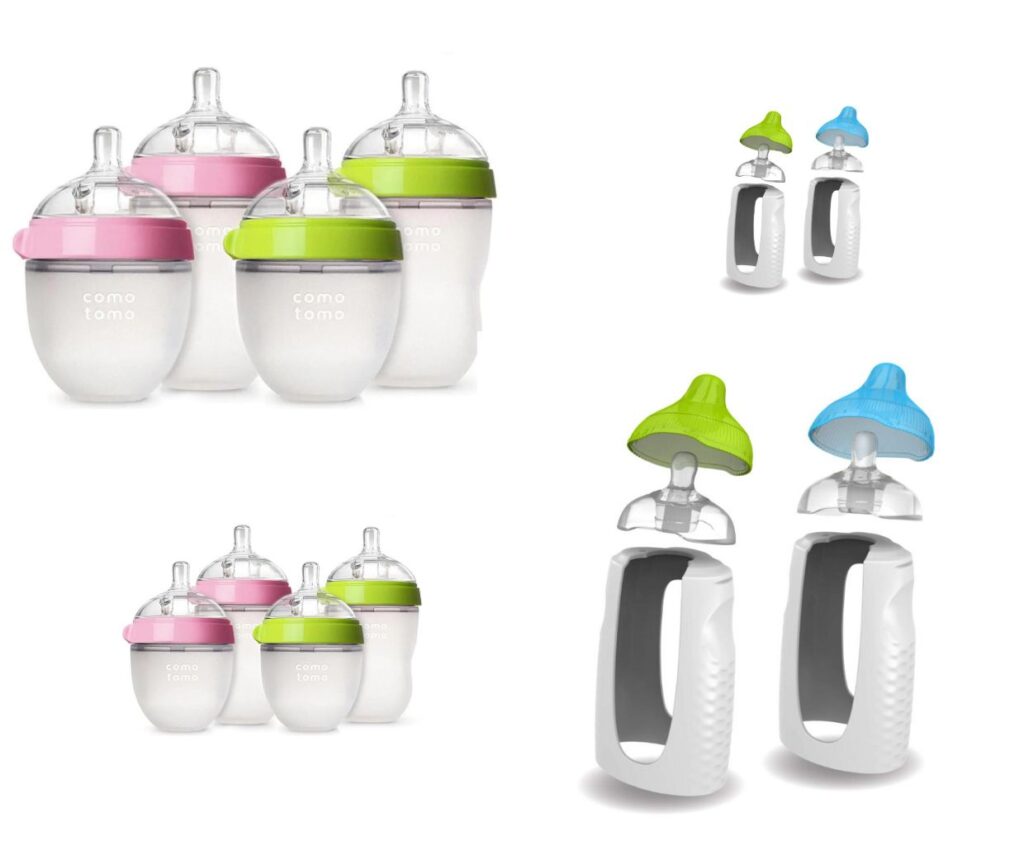Comotomo Bottles vs. Kiinde Bottles: Choosing the Right Feeding Solution for Your Baby
Finding the right bottle can make a difference when it comes to feeding your baby. Two popular options on the market are Comotomo bottles and Kiinde bottles. Both brands offer unique features and benefits that cater to different needs and preferences.
In this article, we will explore the differences between these two bottle brands to help you make an informed decision for your little one.
Comotomo Bottles

One of the standout features of Comotomo bottles is their wide-neck design, which makes them easy to clean and assemble. The wide opening also allows easy filling and measuring, reducing mess and spills during feeding time.
Comotomo bottles have a dual anti-colic vent system that helps prevent air ingestion, reducing the chances of gas, reflux, and colic. The bottles are also heat-resistant and safe for microwaves, dishwashers, and sterilizers, making them convenient for busy parents.
Key Features of Comotomo Bottles
-
- Soft, squeezable silicone material
-
- Wide-neck design for easy cleaning and filling
-
- Dual anti-colic vent system
-
- Heat-resistant and safe for various sterilization methods
Kiinde Bottles

The Twist Pouch system eliminates the need for transferring milk from storage bags to bottles, minimizing the risk of spills and contamination. It also saves time on cleaning and sterilizing, as the pouches are disposable and can be easily replaced after each use.
Another notable feature of Kiinde bottles is the Active Latch nipple, designed to promote a natural latch and prevent nipple confusion for breastfed babies. The nipple is made from soft silicone and features a one-way valve that mimics the flow of breast milk, making it easier for babies to switch between breastfeeding and bottle feeding.
Key Features of Kiinde Bottles
-
- Compatible with Twist Pouches for easy and hygienic milk transfer
-
- Active Latch nipple for a natural feeding experience
-
- Reduces the need for cleaning and sterilizing
-
- Convenient and time-saving
Ultimately, the choice between Comotomo bottles and Kiinde bottles depends on your baby’s specific needs and your personal preferences. Some babies may prefer the soft, squeezable feel of Comotomo bottles, while others may benefit from the convenience and time-saving features of Kiinde bottles. When deciding, it’s essential to consider factors such as your baby’s feeding habits, any issues with colic or gas, and your lifestyle.
Remember, every baby is unique, and what works for one may not work for another. It may be helpful to try different bottle brands and observe your baby’s feeding behavior and comfort level to determine the best feeding solution for your little one.
Comotomo vs. Kiinde: Which bottle is best for colicky babies?
Regarding choosing a bottle for colicky babies, two popular options are Comotomo and Kiinde. Both brands offer unique features that aim to reduce colic symptoms and provide a comfortable feeding experience for your little one. Here, we will compare the two bottles to help you decide which is best for your colicky baby.
Comotomo bottles are known for their soft, silicone, and breast-like design. The wide mound and naturally shaped nipple mimic the feel and movement of breastfeeding, making it easier for colicky babies to latch on. The soft silicone material also allows for a more natural feeding experience and helps reduce air ingestion, which can contribute to colic. Comotomo bottles are easy to clean and assemble, making them convenient for busy parents.
On the other hand, Kiinde bottles are designed with an innovative system that eliminates the need for traditional bottle feeding. The Kiinde system uses disposable pouches that can be pre-filled with breast milk or formula and then attached to the bottle. This feature reduces air pockets in the bottle, reducing colic symptoms. Additionally, the pouches can be directly attached to a breast pump, eliminating the need for transferring milk to a separate container. This system can be convenient for colicky babies who need to be fed quickly and without unnecessary air intake.
Both Comotomo and Kiinde bottles have features that can benefit colicky babies. The choice between the two ultimately depends on your baby’s needs and preferences. Some colicky babies may find the breast-like design of Comotomo bottles more comforting, while others may benefit from the convenience and reduced air intake of Kiinde bottles. It may be helpful to try both bottles and see which one works best for your baby’s colic symptoms.
Comotomo Bottles vs. Kiinde Bottles: Which bottle is more durable and long-lasting?
When choosing baby bottles, durability, and longevity are important factors to consider. Two popular brands in the market are Comotomo and Kiinde. Both brands offer unique features and are known for their quality, but which is more durable and long-lasting?
Comotomo bottles are made from soft silicone that mimics the feel of a mother’s breast, making them a popular choice for breastfed babies. The silicone material used in Comotomo bottles is highly durable and resistant to cracks, tears, and breakage. These bottles are heat-resistant and can withstand high temperatures without warping or melting. Comotomo bottles have a wide-neck design, making them easier to clean and assemble.
On the other hand, Kiinde bottles are made from high-quality plastic that is BPA-free and safe for babies. The plastic used in Kiinde bottles is known for its durability and strength. These bottles are also designed to resist leaks and spills, making them ideal for on-the-go use. Kiinde bottles feature a twist-lock mechanism that ensures a secure seal and prevents leakage.
Comotomo and Kiinde bottles are designed to be long-lasting and withstand regular use. However, some users have reported that Comotomo bottles may become slightly misshapen or lose their softness over time. This is a minor issue and does not affect the bottle’s functionality. Kiinde bottles, on the other hand, have a straightforward design with fewer parts, which may contribute to their overall durability.
In conclusion, both Comotomo and Kiinde bottles are durable and long-lasting options. However, if you prioritize a softer and more breast-like feel, Comotomo bottles may be your better choice. On the other hand, if you prefer a simple design with fewer parts, Kiinde bottles may be more suitable. Ultimately, choosing these two brands depends on your preferences and needs.


